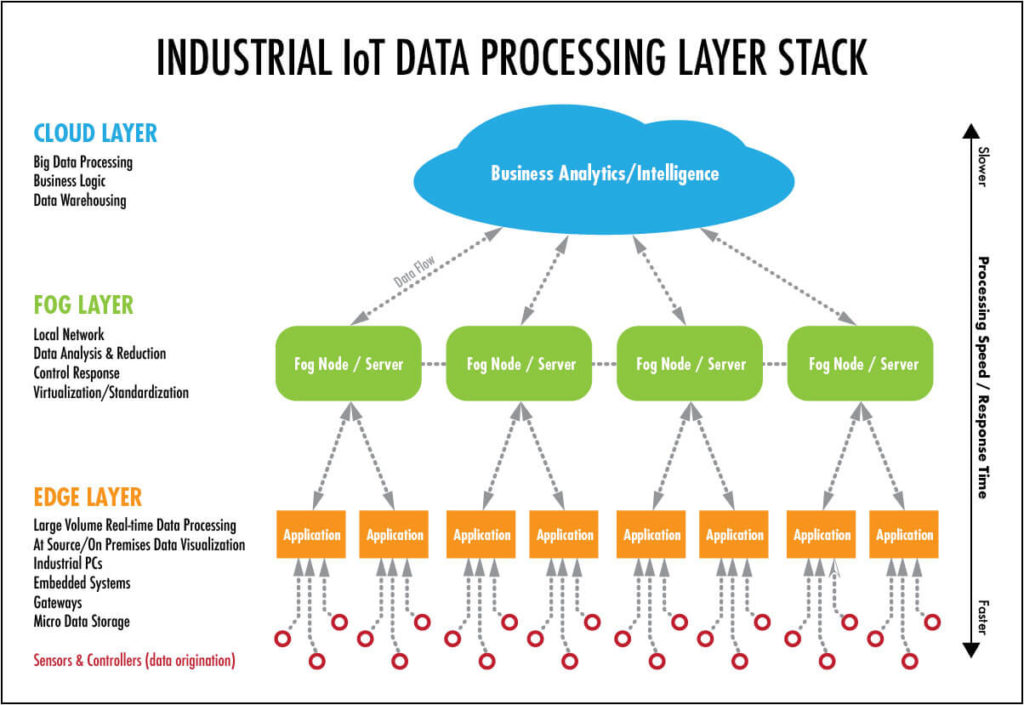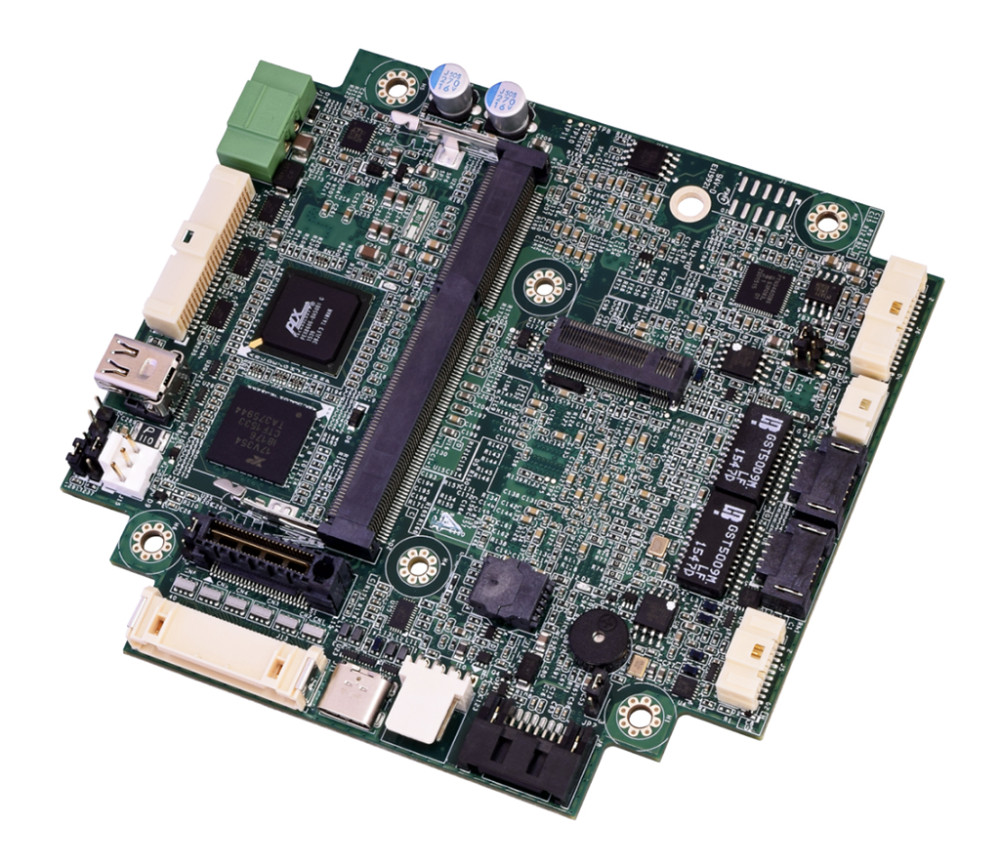
In a recent blog, we looked at the basics of how and why PC104 can enable the rugged Edge of the Industrial IoT (IIoT). That constituted Part 1 of this two-part blog. Here in Part 2, we’ll discuss how, in addition to enabling the Edge, PC104 can move into the Fog, and then into the Cloud.
First, let’s be sure we understand the terms, as different definitions are sometimes bandied about. The Edge is where the data is taken in. Sensors typically reside at the Edge, and absorb information from the outside world, and possibly do some level of processing. That information is fed into the Edge computer where initial processing is performed before the data is passed through to the Cloud for detailed processing and analytics.
The Cloud is where the heavy computing takes place, where analytics are calculated, and where management decisions are made. The Fog is a little more fuzzy. It’s a newer concept and is sometimes confused with the processing that takes place at the Edge. But it generally serves as a gateway and second layer of processing between multiple Edge computers and the Cloud.

As we witnessed at the recent Embedded World trade show, there’s a trend toward more distributed processing as opposed to centralized processing. While centralized processing still occurs in the Cloud, there’s a strong movement to shift more processing to the Edge. The reason? More processing power is available in form factors that allow it to occur. One of those form factors is PC104.
There are many reasons why Edge computing makes sense, starting with the elimination of time delays that are inevitable when sending data to and from the Cloud. The advent of 5G will make that situation better, but it’s not here yet. And it’s anyone’s guess as to when widespread deployment will occur. You also have more peace of mind knowing that your data is secure because it never leaves the premises.
PC104 is making inroads at the Edge in applications like automation, robotics, and manufacturing. For example, a PC104-based stack could be employed on heavy equipment such as an oil delivery truck. Here, the goal is access to more data, and in this example, the PC104 stack can be connected to the vehicle’s CAN bus, its GPS, RFID, and all of its payload sensors. The end result is a slew of data upon which far more intelligent decisions can be made.
And this is where the Fog and Cloud come into play. At the Edge, we can calculate the driver’s route, customer information, and the amount of fuel/oil that is to be dispensed at each location. This information is then fed back to the Cloud (through the Fog, if it’s enabled in the application) at the company’s HQ, where more detailed calculations are made, based on information from other sources. That could include:
- • Weather data: do we send the driver out in the morning, or wait until later in the day
- • Oil prices: based on the real-time consumption levels, do we acquire more oil today, or wait for more attractive pricing
- • Mapping: knowing the environments the vehicles are traveling to and the distances, maintenance schedules can be updated accordingly
- • Live traffic: while this can be handled locally at the vehicle, knowing the traffic for the area and the whereabouts of the entire fleet at the Cloud level can result in updated routes and schedules
- • Work schedules: knowing the amount of deliveries that need to be made on a given day, the system can schedule workers accordingly

The described Edge applications are a perfect fit for a single-board computer (SBC) like WINSYSTEMS’ PX1-C415. The board fits the PC104 form factor with PCIe/104 OneBank expansion. It’s also designed with the latest generation Intel Atom E3900 series SoC processor family. The SBC’s small size, rugged design, and extended operational temperature suit it for a host of industrial and transportation-related Edge applications.
The bottom line is that you need to determine where decisions are best made—Edge, Fog, or Cloud—for your applications. You’ll likely find that it’s a combination of all three, and it’s the proper allocation that will make your deployment operate at its highest level of efficiency.
